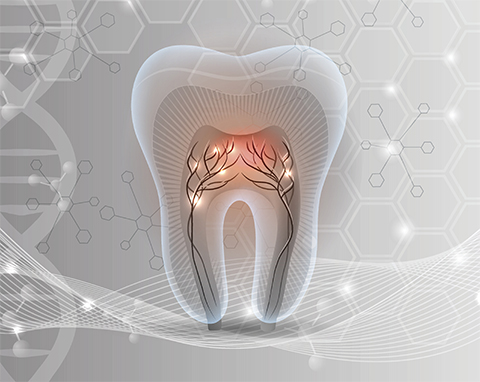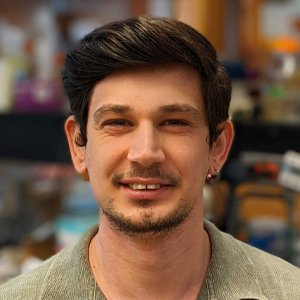How a gene spurs tooth development
Wolf-Hirschhorn syndrome, or WHS, is a rare genetic disorder affecting one in every 50,000 births. WHS starts to appear in the fetus during pregnancy; babies born with the disorder tend to have cleft lip or palate, delayed development, intellectual disabilities and congenital heart disease. In WHS, a small part of one of the 46 chromosomes, chromosome 4, is missing. The WHS candidate 1, or Whsc1, gene, normally present at this portion of chromosome 4, is absent.
Loss of this gene’s activity leads to tooth development dysfunction, another WHS symptom. Dan Su and a group of scientists from the University of Iowa use mice to study the mechanisms of the Whsc1 gene in regulating tooth development. Their recent work was published in the Journal of Biological Chemistry.

“Our lab is interested in craniofacial development, and tooth development research is one of our main focuses,” Su said. “Tooth anomalies have been considered as an underestimated feature for WHS, affecting about 50% of the WHS patients. However, the underlying genetic mechanism has not been fully studied.”
Su and colleagues reported that the Whsc1 gene is expressed in the developing tooth germs of mice, and the expression is colocalized with dental epithelial stem cells, which develop into dental epithelium. Lab experiments also showed that the Whsc1 gene activates dental epithelial cell proliferation.
Some molecules can regulate the expression of genes without creating any changes in the gene sequences. MicroRNA, or miRNA, is one of these molecules. During expression, cellular enzymes generate messenger RNAs, or mRNAs, by reading the gene sequences. These mRNAs are active in gene expression. miRNAs, on the other hand, bind mRNAs to prevent their activities and inhibit gene expression.
The researchers reported that Whsc1 gene expression is regulated by two miRNAs, miR-23a/b and miR-24-1/2 during tooth development. Whsc1 expression begins at the early stage of mouse embryo formation and decreases during development — the expression of miR-23a/b and miR-24-1/2 increases as development proceeds. The team also showed that inhibition of both miRNAs results in increased Whsc1 expression. These results suggest a direct interaction between these two miRNAs and Whsc1.
“This study provides new insights into the potential role of Whsc1 in regulating tooth development and a possible molecular mechanism underlying the dental defects in WHS,” Su said. “Also, since molecular interactions playing a role in these regulations are conserved in humans, the findings will be applicable to humans as well.”
Pitx2 is another gene that has a role in tooth development. The researchers suggested that Whsc1 positively regulates Pitx2 gene expression. However, they will need to do more studies to address the mechanism of the regulation.
“We may see indirect interaction between these two proteins, forming a complex that activates Pitx2 gene expression,” Su said, “or there is another molecule that mediates the regulatory network between these two genes. Investigating these two hypotheses would be our next goal.”
Enjoy reading ASBMB Today?
Become a member to receive the print edition four times a year and the digital edition monthly.
Learn moreGet the latest from ASBMB Today
Enter your email address, and we’ll send you a weekly email with recent articles, interviews and more.
Latest in Science
Science highlights or most popular articles

Building the blueprint to block HIV
Wesley Sundquist will present his work on the HIV capsid and revolutionary drug, Lenacapavir, at the ASBMB Annual Meeting, March 7–10, in Maryland.

Gut microbes hijack cancer pathway in high-fat diets
Researchers at the Feinstein Institutes for Medical Research found that a high-fat diet increases ammonia-producing bacteria in the gut microbiome of mice, which in turn disrupts TGF-β signaling and promotes colorectal cancer.

Mapping fentanyl’s cellular footprint
Using a new imaging method, researchers at State University of New York at Buffalo traced fentanyl’s effects inside brain immune cells, revealing how the drug alters lipid droplets, pointing to new paths for addiction diagnostics.

Designing life’s building blocks with AI
Tanja Kortemme, a professor at the University of California, San Francisco, will discuss her research using computational biology to engineer proteins at the 2026 ASBMB Annual Meeting.

Cholesterol as a novel biomarker for Fragile X syndrome
Researchers in Quebec identified lower levels of a brain cholesterol metabolite, 24-hydroxycholesterol, in patients with fragile X syndrome, a finding that could provide a simple blood-based biomarker for understanding and managing the condition.

How lipid metabolism shapes sperm development
Researchers at Hokkaido University identify the enzyme behind a key lipid in sperm development. The findings reveal how seminolipids shape sperm formation and may inform future diagnostics and treatments for male infertility.

